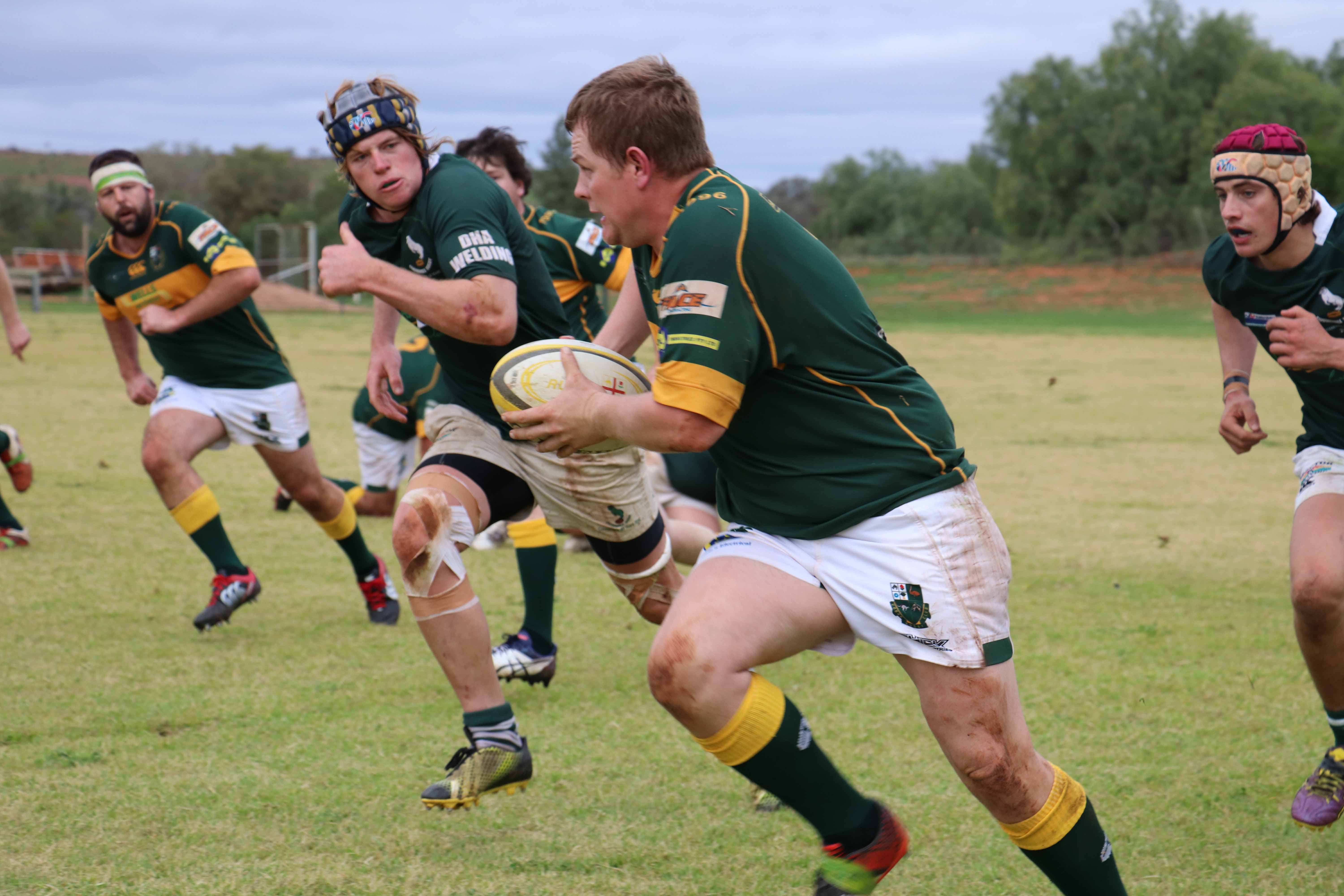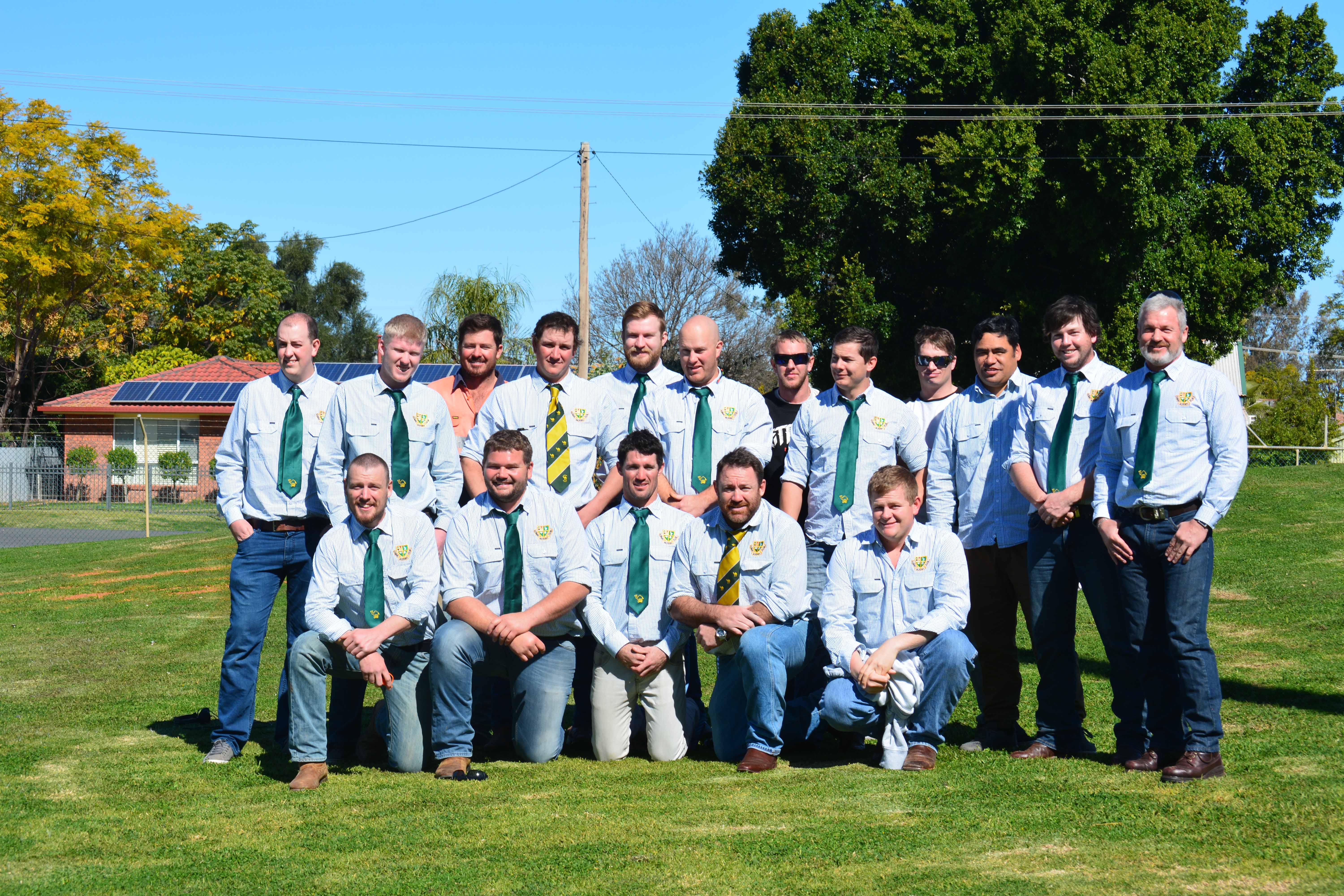
The Cobar Weekly invited Rugby Union stalwart, Kevin ‘Rusty’ Mitchell to pick Cobar’s Best Rugby Team which he found pretty hard going and so Rusty selected enough players for two sides.
“There are so many good players here I could not forecast the winner if they played each other,” Rusty said.
He recalls Cobar Rugby started in 1957 from modest beginnings, and it was played as 7-a-side away games with some home games played at Ward Oval with borrowed Cobar High School football jumpers.
The following year, the game was played with a full side.
In 1959 the Cobar team played in the Far West competition with a team travelling to New Zealand in 1963 where they were showed how to play the game by the locals.
They played six games with four losses, one draw and one win.
Rusty’s first team of 15 best players (and four on the bench) come from players who played from 1958 to 2019.
In the front row were: Wally Black, Bill Houghton and Peter Middleton. As tighthead prop, Wally was strong and fast. At Hooker, Bill was the fastest striker of the ball, and Peter at loosehead was strong and hard and held the front row on their feet. We won a lot of games from there. (Bill Houghton did a lot of refereeing when he retired. He still won a lot of games for us in that position.)
In the second row is John McIntyre and Terry Francisco who were great lineout jumpers. They were the engine room of the scrum and rucks.
The breakaways have to be quick off the mark, excellent tacklers, fit, be able to read the play and be first to the breakdown to get possession so Rob ‘Hippy’ Hurst and Chris Forbes earned those jumpers.
Cobar’s best lock and line-out jumper was John Harris.
Kel Ellicott, reserve forward, could play any position in the forward pack well.
In the backs, Darby Warner was our best all round halfback. He was aggressive in attack and defence and would go in after the ball in rucks, not waiting for the ball to come to him.
Greg Prince was the best five-eight I’ve seen in my time, in league or union.
Wallaby Bruce Harland is inside centre. Bruce had the ability to draw two players to commit to tackling him which left him the option to pass to his outside centre who was always mostly in the clear. (You just have to ask Paul Reid who played with him.) Bruce was also a punishing tackler.
Equal to Bruce was Derek Carter who came after Bruce. Strong, fast, evasive and able to step both ways, Derek was an excellent footballer.
Doug North could play anywhere in the back line. He was an outstanding footballer and sportsman.
Paul Reid was a good tackler (ball and all), he was fast with good hands and played brilliantly coming off Bruce Harland to take advantage of every gap made by Bruce.
My wingers would be Lance Harland, who was fast and quick off the mark and could read the play as it unfolded, and Dennis Purcell
Dennis was a hard running player who could break tackles on his way to score.
In the Fullback position is Dick Houghton, a good catcher of the ball, a good tackler and player over the sideline. He was calm under pressure and would join the backline
anywhere to make the extra man. (Fullbacks have the awesome task of having to stop a player that 14 players up front have not stopped.)
Roger Shanahan also gets a guernsey. He was a great outside centre that could step off both feet, was fast and strong in defence and attack.
“The players below could run on for any of the above and the tempo of the game would change: except for Greg Prince for whom substitution of two players would be necessary,” Rusty said.
His “second” team is: Daniel Howard (he and Greg Prince were the two toughest players who could handle pain and play on), Murray LeLievre, Glen ‘Pig’ Middleton, Stuart Mosely, Ian Handley, Bill Cahill, Darrel Green, Dave Morgan, Michael ‘Bushy’ Prince, Lochie Sullivan, Greg ‘Nugget’ Mitchell, Cliff Poland, Greg Black, Benn Wright, Ian Gross, Alistair Ewan, Lang Strange, Dennis Mudd, Mark Aumua, Tony Davis, Steve O’Grady, Tom Wall, Bernard Morrisey, Roger Mitchell, Rob Parr,
Netava Tagi, Stuart Harland and Justin Sampson.


